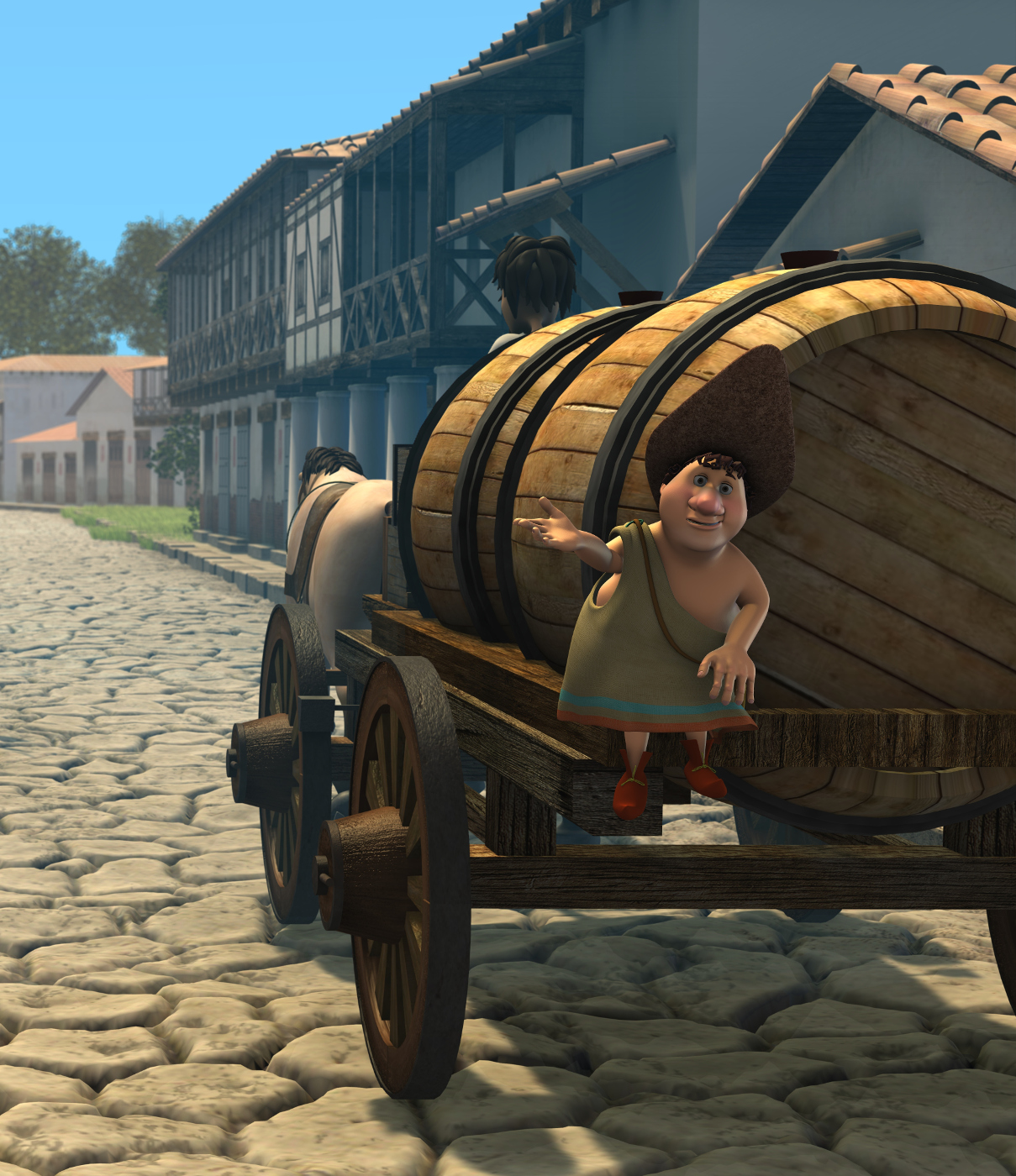
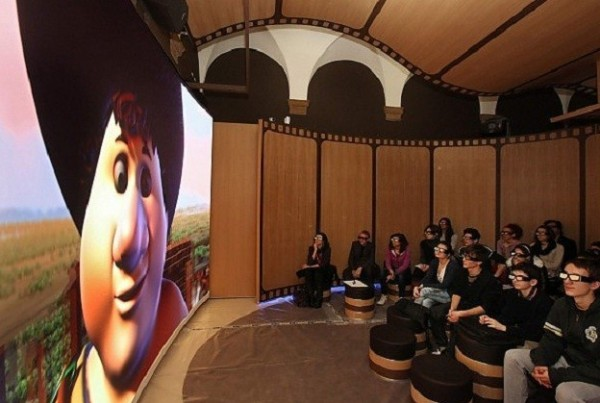
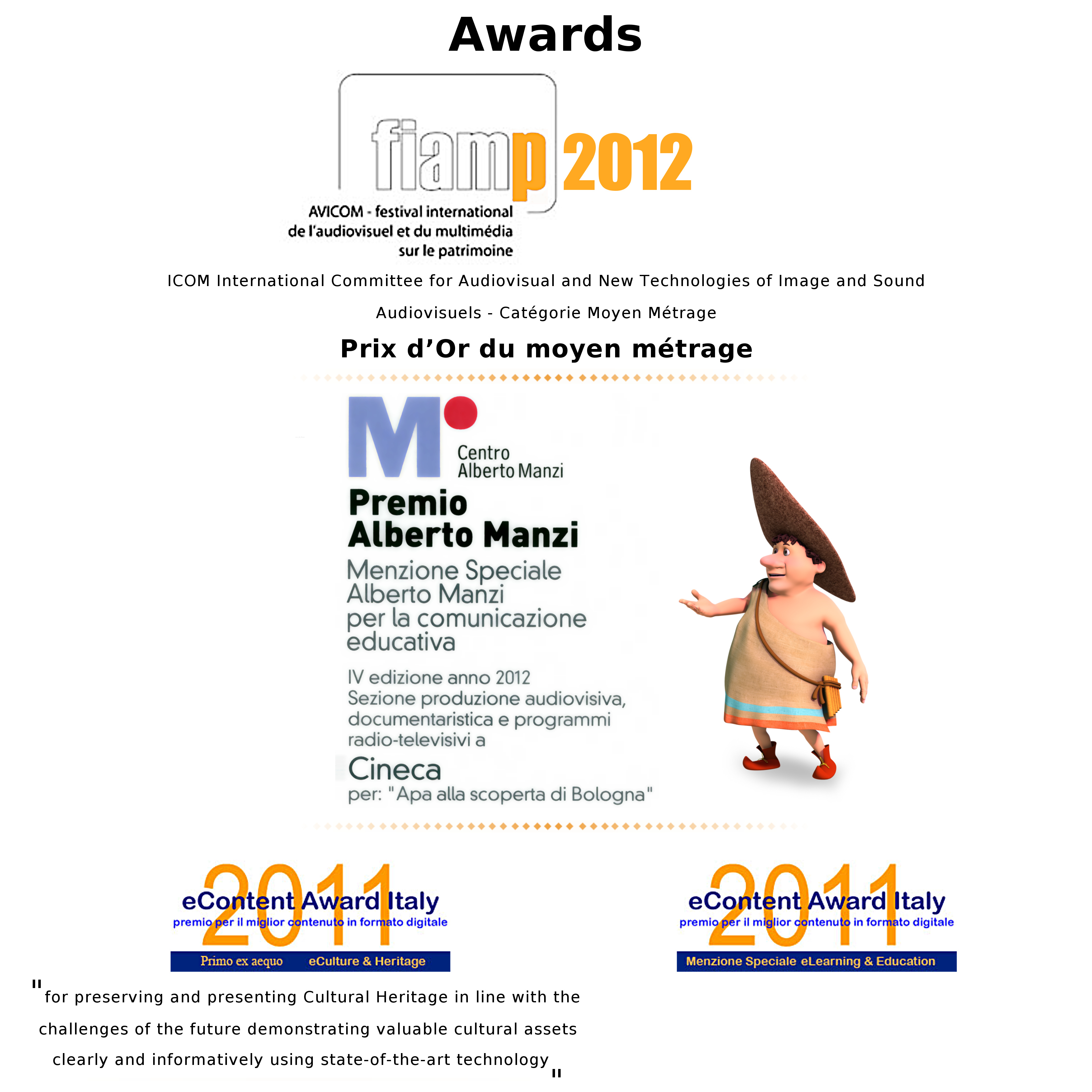
The Apa game (temporary name) is a third-person adventure game for on-line PC platforms. It uses the open source Blender game engine to thrust players into the role of a merchant's apprentice in 13th century Italian city of Bologna. Guido, the main character, falls into a time vortex and finds himself in Roman Bologna, where, through the accomplishment of some quests and the solution of funny educational riddles, he must figure out a way to get back home, in the 13th century.
Relevant concepts of the production are: re-use, open-source, philological attention, cross-mediality. The game uses several already available assets from the "Apa the Etruscan" movie, adapted for on-line game, plus some modified characters from BlendSwap; the open-source production pipeline is grounded on Blender for modeling, adaptation of animated and high-poly models to real time and developement of gameplay scripting; OwnCloud for storage and sharing; Blender Game Engine and Burster for on-line gaming. The assets are based on precise archaeological references and realised under scientific supervision and the on-line game will be accompanied by an Augmented Reality application for iOS devices, to be used while strolling about the real city of Bologna. Character animation test
(Download Video:
Closed Format: "MP4"
Open Format: "Ogg")
The character is modeled and animated starting from this model made by Gustav Goransson
15 minutes short movie, 20 location, 100 shot,
Apa the Etruscan and 2700 years of Bologna History, a joint production Cineca and Museum of the History of Bologna - Genus Bononiae, is the first 3D stereoscopic Blender-made movie with high historical standards applied to an entire city with four different geo-referenced scenarios and seven historical periods: Etruscan, Roman, Medieval, Renaissance, XVII and XVIII century and the present day.
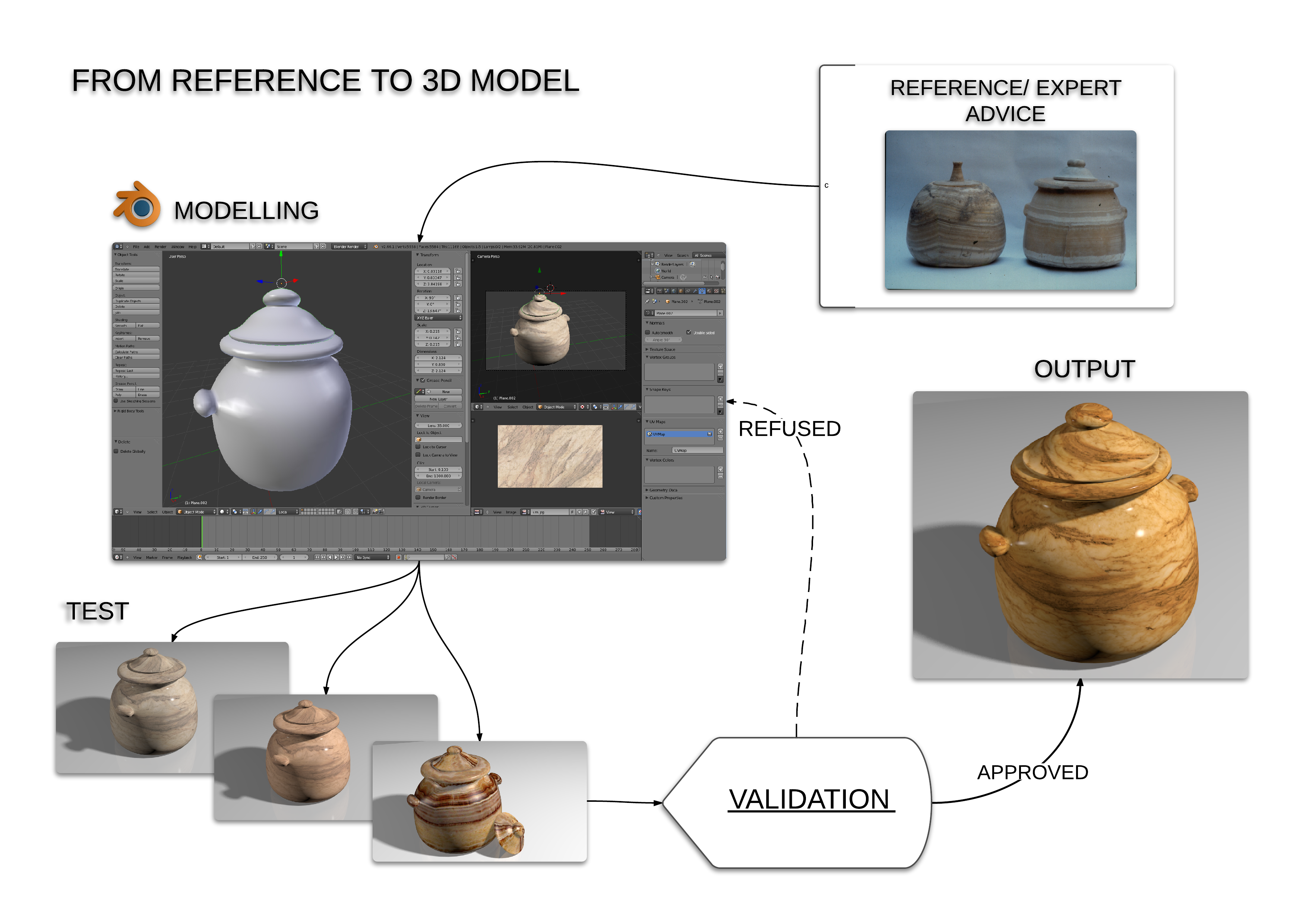
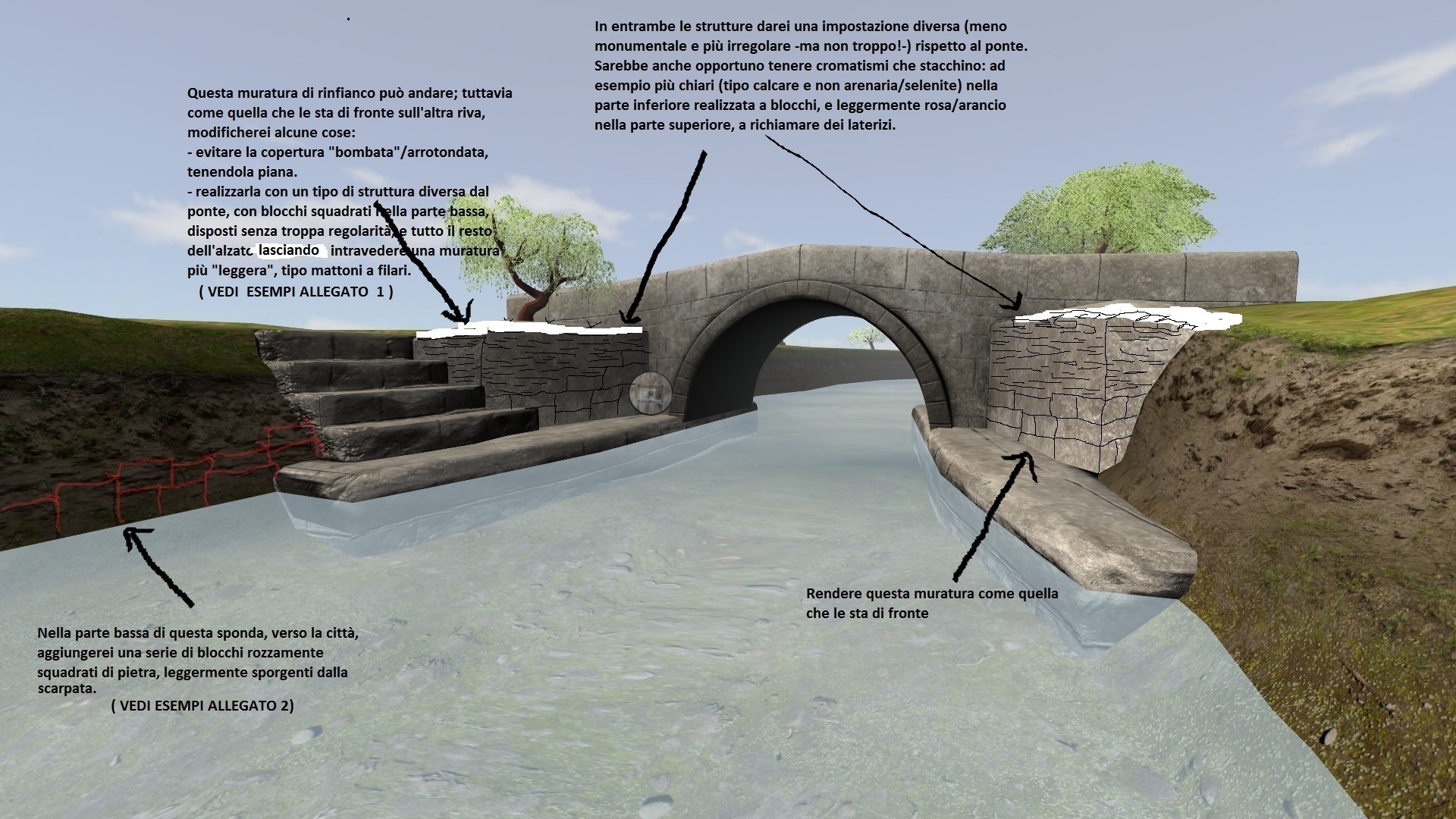
Philological supervision during the asset development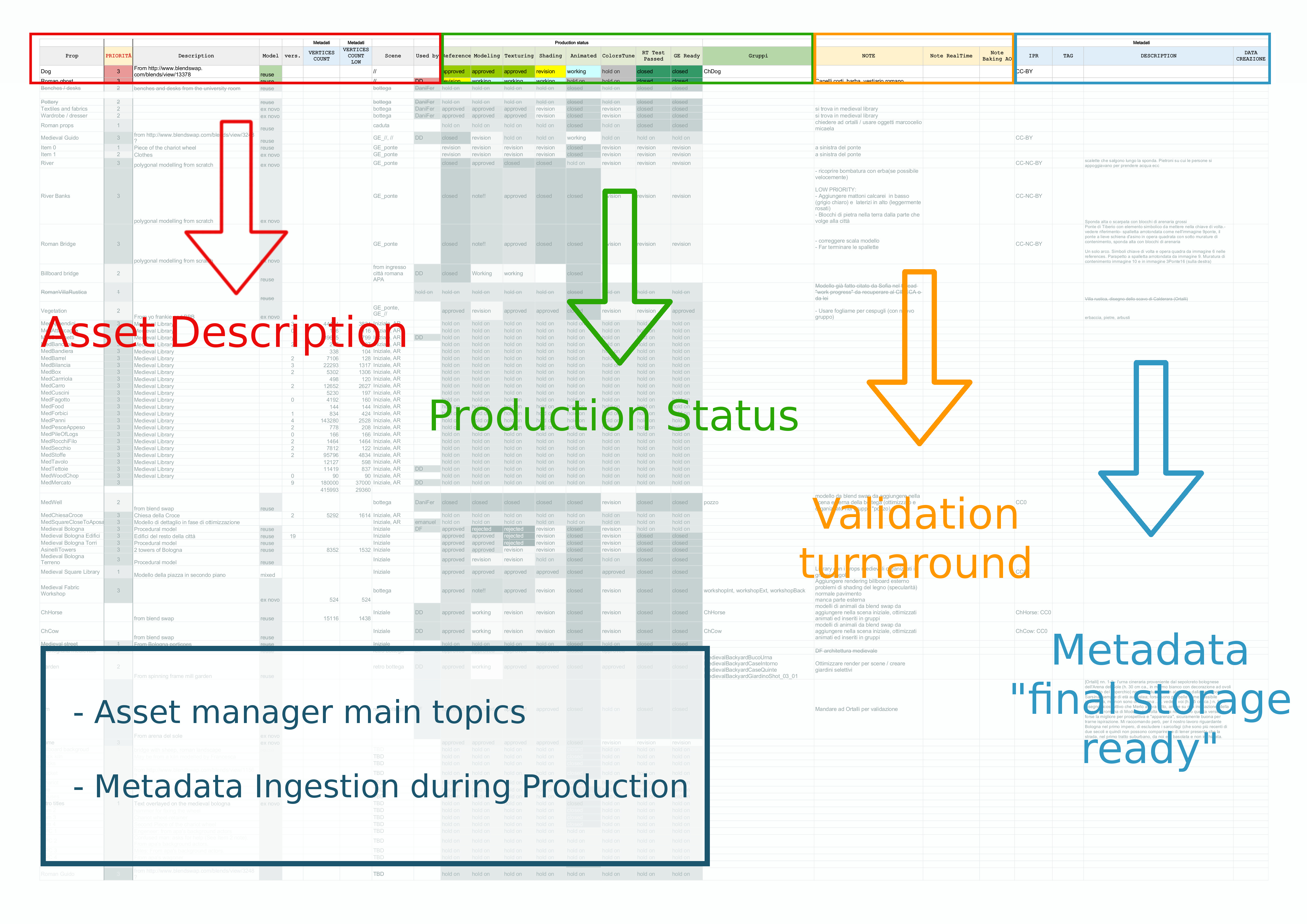
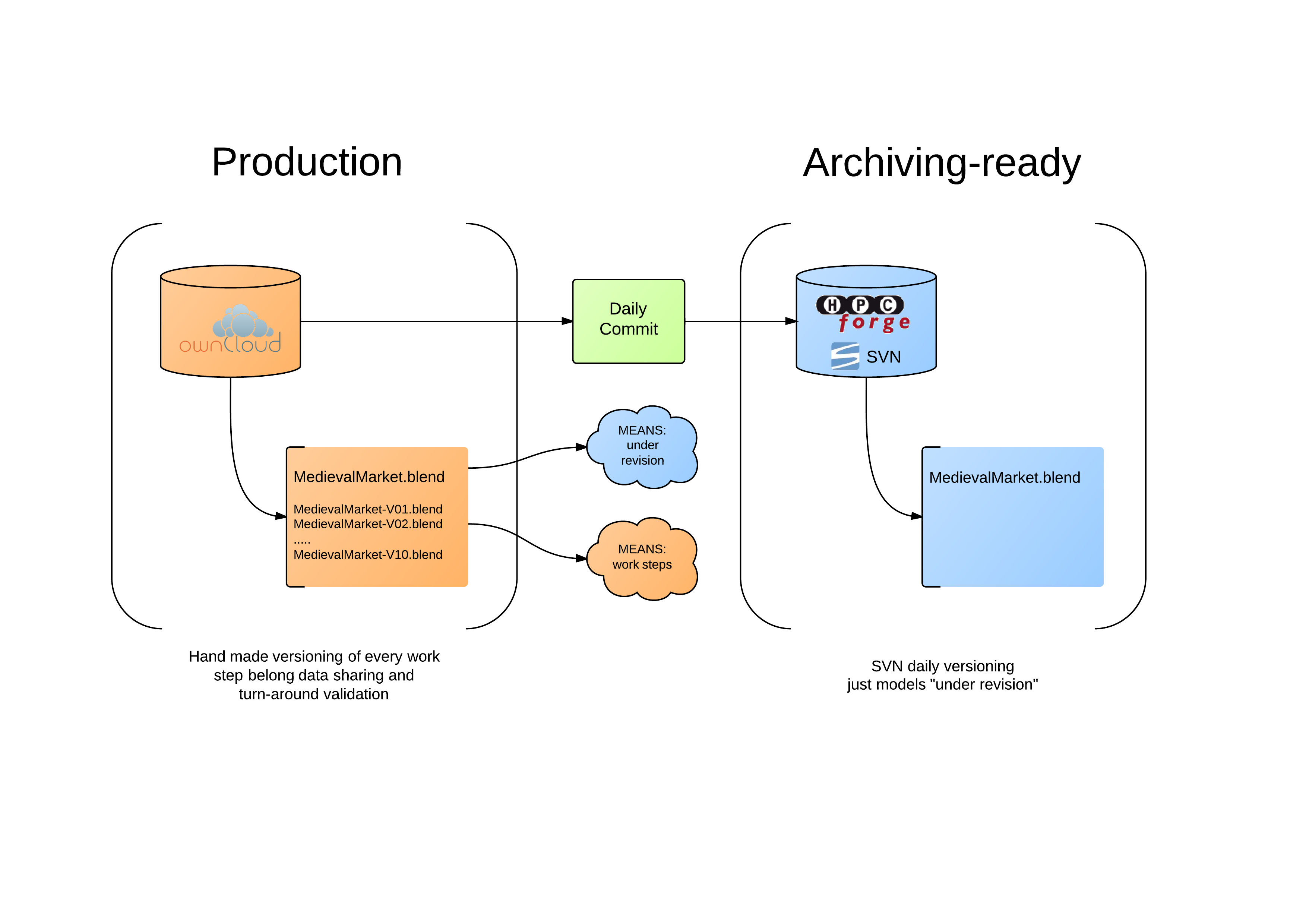
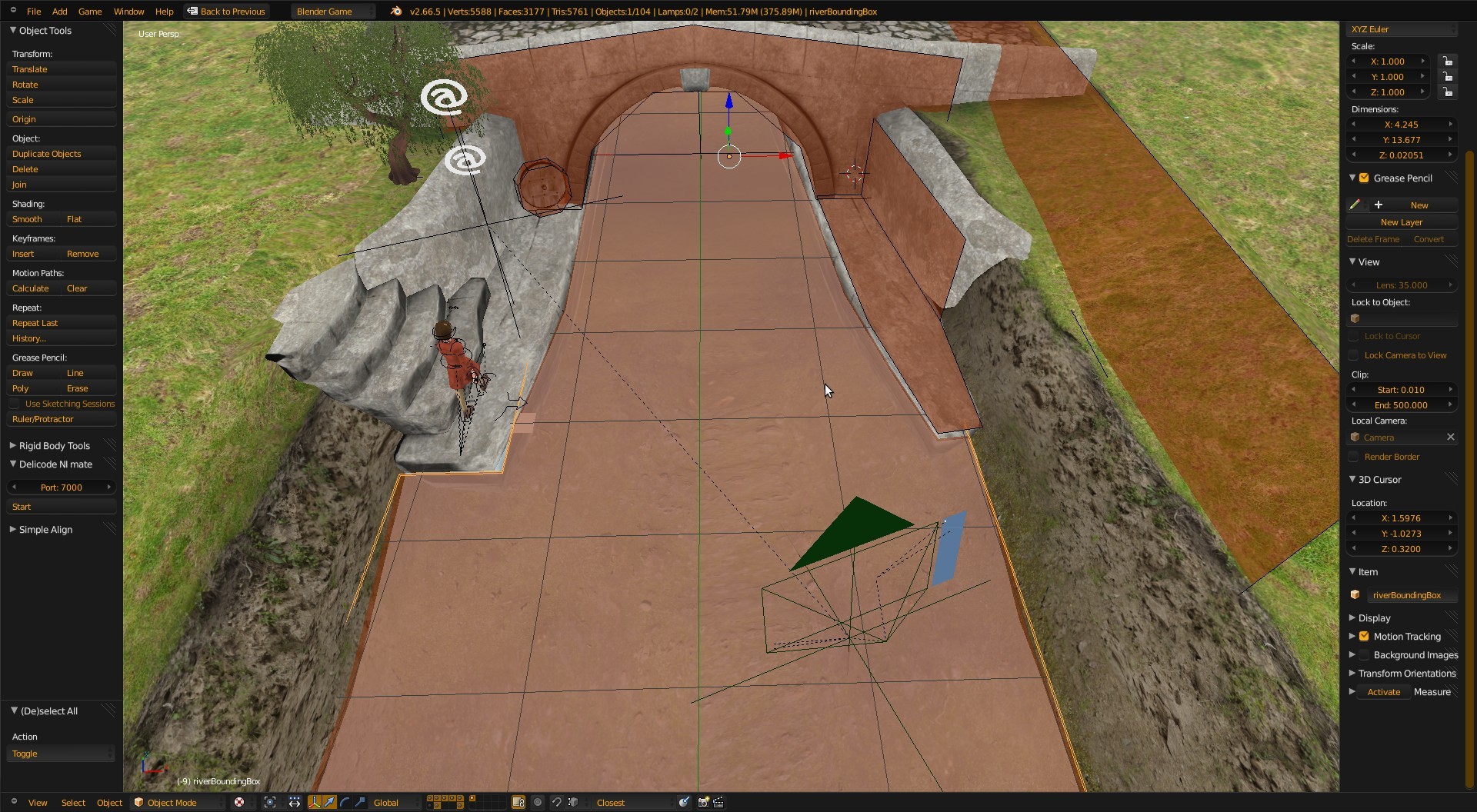
Bounding box system managed through logic bricks and python scripting

Testing the inventory system